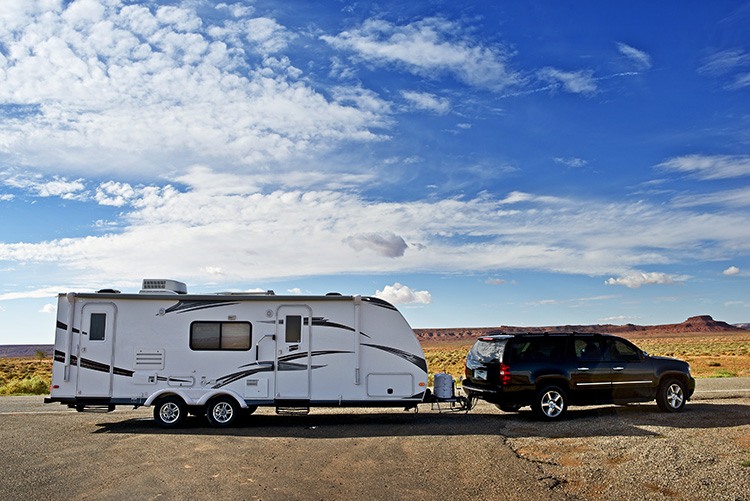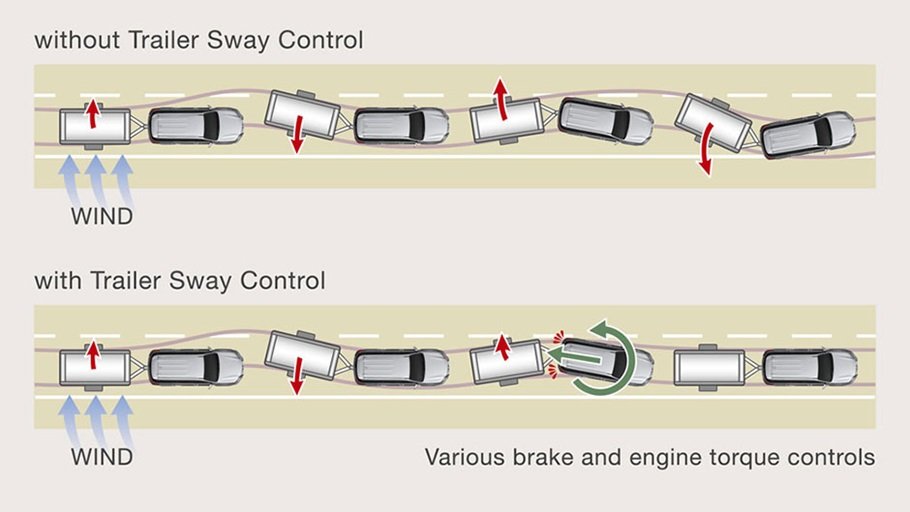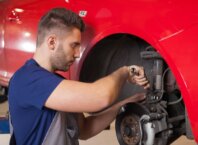You are excited about traveling on the open road because you just got your new trailer. The next thing to do is stock it up with stuff that you need for travel and towing. It might be easy to think that you can immediately start packing up, but remember that where you put things will matter. If you mistakenly put too much stuff in one area making it heavier than the rest, this can be dangerous for you. Not having the proper equipment while towing can cause problems with the handling of the trailer and how you can stop. Here are tips you can follow to make loading and towing an RV trailer easier for you.

Consider the hitch receiver first
This is the square tube that you see under the bumper. These are classified from 1 to 4 which depends on the amount of weight you need to pull. It would be ideal to allow yourself some safety room and add some extra weight compared to your current truck. You also need to have the receiver welded to the tow vehicle’s frame that comes with long weld beads, not only spot welded. You will find a steel bar inside the receiver that comes with a hitch ball, which is as high as the down or upward hitch. The tongue weight should be 10% of the total rating. The rating is given when the hitch ball’s total weight is rated.
The use of sway controls

Via Toyota.com.au
Sway controls can be bought so that travel trailers can be prevented from swaying back and forth. They have minimum effectiveness and simply apply friction to keep the sideways motion from increasing when the trailer begins to sway. The sway controls attach to the trailer tongue’s side and the hitch side on the vehicle. You can adjust how much friction it puts on the restriction.
If your trailer is loaded properly, and the bar tension on the Elizabeth Hitch is correct, this should be sufficient for towing.
What you need to remember is that long travel trailers do not tow very well. Their axles are located at the rig’s center; long trailers tend to sway. If the wheels were placed at the trailer’s rear, you don’t have to deal with the swaying. It is because your pickup is not able to carry too much tongue weight.
Trailer brakes
There are brake requirements on trailer coaches or camp trailers in every state depending on their gross weight. Normally, towing vehicles have a good braking capacity, but it may not be enough to stop the additional pounds that are on your trailer. The majority of conventional and 5th wheel trailers are equipped with electric brakes, powered by a controller in the vehicle. There is automatic coordination provided by the controller and trailer braking so that both systems will work together when there is brake pedal pressure. The controller can be used to stabilize a swaying trailer due to bad road conditions. Manual application of the trailer brakes by the use of a hand lever on the controller is going to stabilize a trailer that will tend to sway. Camp trailers that fold are normally have fitted surge brake systems that operate separately from the brakes of the tow vehicle.
A mechanism that is attached to the receiver or ball connection is used to apply surge brakes. When the tow vehicle starts to slow, the trailer’s forward motion compresses the mechanism that applies the trailer brakes in return.
Loading your travel trailer
Safely loading a travel trailer entails a careful process of loading. If you load heavier items into the trailer, they should be placed near the middle, but you need to tie them down first so they will stay put. You should start with the top heavy items, lay them down and then properly secure them. These items should be properly arranged, so they are protected wherever you placed them. It is not enough to tie them down and they need to be tied off from different angles or a change in speed could shift them. The smaller items you have can be used as filler material when they are fastened down properly.
You can now start checking the amount of tongue weight while you load. Smaller items can be loaded so that the load is balanced. Attempt to load the weight evenly from both sides. If one side is overweight, this can cause a serious problem when you are turning a corner, which can also turn over the trailer. Avoid putting heavy things on add-ons from the rear or situated across the frame’s tongue. You can load a bicycle, but that’s it.
Equalizer hitch

This is user to redistribute the trailer weight on the tow vehicle. Once you set the chains on the bars of the hitch, part of the tongue weight gets transferred to the front axle of the tow vehicle. Without enough tension on the bars, the trailer will move out of place when passing on bumpy roads. If you set the chains one link tighter, this will transfer a sufficient amount of weight to even out and keep the hitch stable in place. Using an equalizer hitch can help improve the ability of your tow vehicle to turn, steer, and brake, particularly if you own a large and heavy load.
Trailer lights
There are certain states that require trailers to have reflectors, brake, tail, and lights on their plate lights. Signal lights are needed if the lights on the tow vehicle are hidden. Trailers that are above 80 inches wide need clearance lights. The majority of the manufacturers follow these rules, but it would still depend on you to make sure that lights are working properly.







